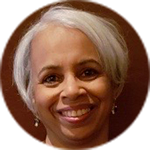4 Ways to Make Mental Health Care Culturally Responsive

All people want to feel welcome, seen, and heard when they seek mental health care. So, how can mental health care providers adjust their practices to serve a diverse group of clients? According to Debra Morris, a senior training and technical assistance specialist for Prevention Solutions@EDC, one way is to foster “culturally responsive” practices.
“Being culturally responsive is about understanding your client and their cultural norms, their cultural background, and what all of that means in a clinical setting,” she says.
By creating culturally responsive practices, practitioners can help to reduce long-standing disparities in who accesses mental health care. They can also better support all their patients in their quest for a better life.
“Clients often wonder, am I going to find a mental health professional who understands how culture impacts experiences of trauma or of trying to access basic health care services?” says Adam Swanson, a state and campus suicide prevention specialist with EDC’s Suicide Prevention Resource Center (SPRC).
Building a practice that is inclusive of all patients who may walk through the door requires effort and attention. Here are four things that clinicians can do.
1. Respect each client’s individual experiences
One of the most important strategies for clinicians is to “meet people where they are,” says Morris. This means that clinicians need to consider the unique experiences that shape each individual’s health and wellness, such as their access to health care services, insurance, and a secure place to live and their experiences with racism or discrimination. These differences can directly affect the treatment that clinicians provide.
“Culturally responsive practitioners are able to understand the cultural context within which clients live,” says Morris. “It’s about their culture, their education, their language, and their experiences with the world. You have to think about the whole picture.”
For example, follow-up protocols for a person experiencing homelessness may be different from the protocols for someone with a stable place to live.
Morris learned the importance of this approach while running a community health clinic in Atlanta. She noticed that many clients returned week after week with the same ailments and questions about treatment—even after they had been prescribed medication.
After talking to some returning clients, she learned that many didn’t fully understand what the medication was supposed to do, or even how to take it effectively.
“I needed to be that bridge between physicians, social workers, and nurses and help to explain and translate some of the things the clients heard,” says Morris.
2. Recruit diverse staff
Recruiting, training, and retaining a diverse staff is important in mental health practices.
“When they walk into a clinic, patients want to see people who look like them,” says Morris.
When it’s time to hire new staff, says Rebecca Bishop—a trained clinician and director of EDC’s Massachusetts Center of Excellence on Problem Gambling Prevention—clinics should be direct about the unique skills and experiences they are looking for. This approach encourages more people with diverse experiences to apply for a position, leading to a better applicant pool and ultimately a better hire.
“Instead of just putting out a call for a program director, it’s okay to say, ‘We are looking for a program director who has lived experience of trauma and has worked with populations of African descent,’” says Bishop.
3. Partner with the community
Bishop recommends that clinics and practitioners become involved in the communities they serve. Not only does this help build trust, it may also encourage people who have historically not accessed mental health care to engage with available services.
“Getting involved allows the health center to give back to the local community, which raises its profile and ultimately attracts more clients,” she says.
But health settings must also be authentic in their partnerships. While it’s fine to attend a local health fair and distribute flyers, it’s even better to partner with a community group on a health initiative that could benefit a specific population within that community.
“That kind of partnership shows that you are actually at the table and that as a community we’re trying to improve specific health outcomes as a community,” Bishop says. “It becomes a reciprocal relationship.”
4. Listen and learn
Swanson recommends that mental health practitioners listen closely to their clients and learn how to empathize with them more deeply.
“Clinicians need to function with more humility than they may assume they need to,” he says. “Patients are the experts in their own experiences, and ultimately clinicians are there only to help guide them along their journey.”
Swanson encourages clinicians to reflect on what they are doing to expand their own horizons by asking themselves certain questions: Are they engaging with different aspects of their community in meaningful ways? Do they actively seek opportunities to learn from people different from themselves, outside a therapeutic setting? And when they engage in training or professional development, are they working with an eye toward both clinical practice and human experience?
These practices can help the patient-practitioner relationship become more honest, therapeutic, and equal—which can also improve outcomes for all patients.
“Building space for empathy allows for a more solid and trusting relationship to develop,” says Swanson.


